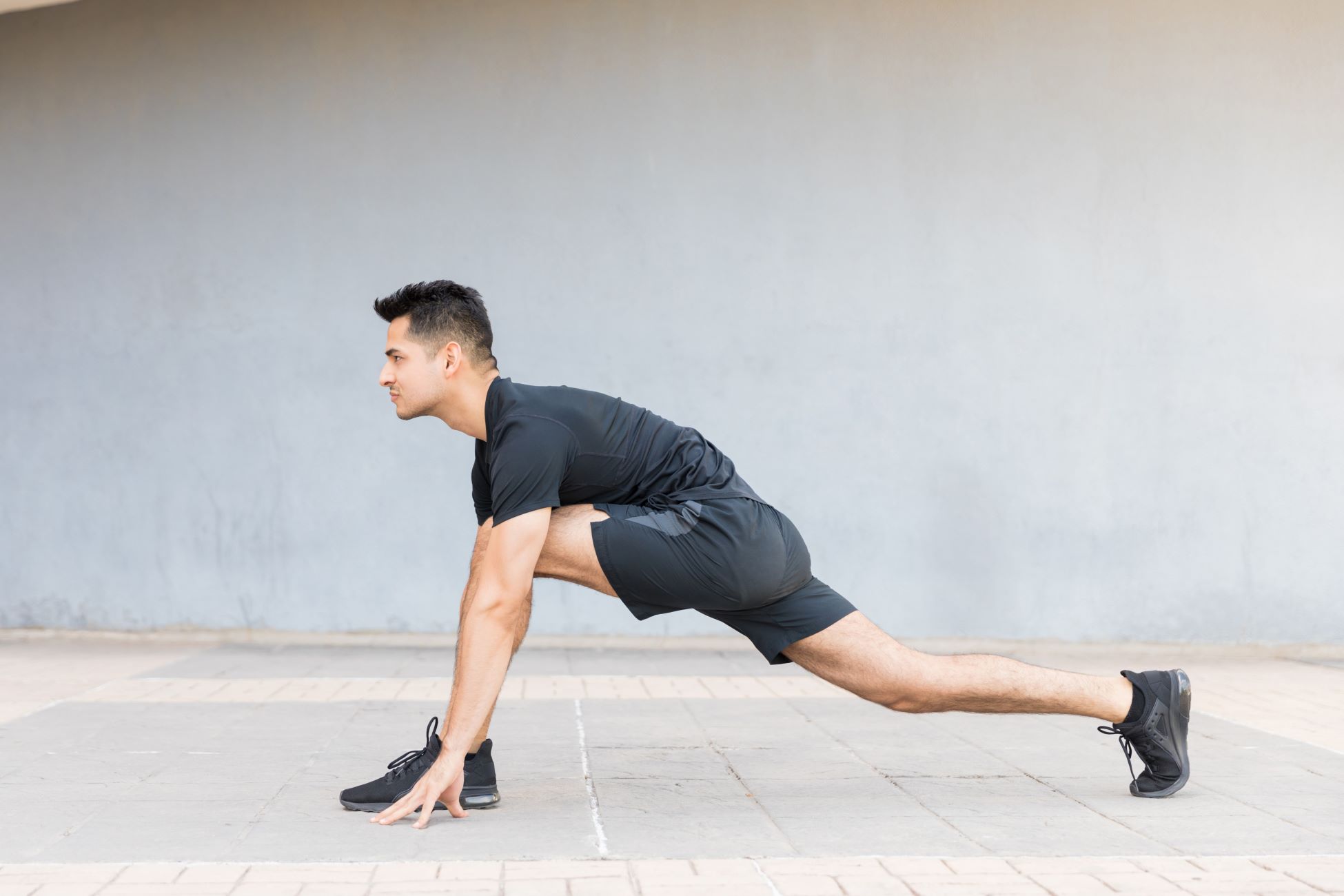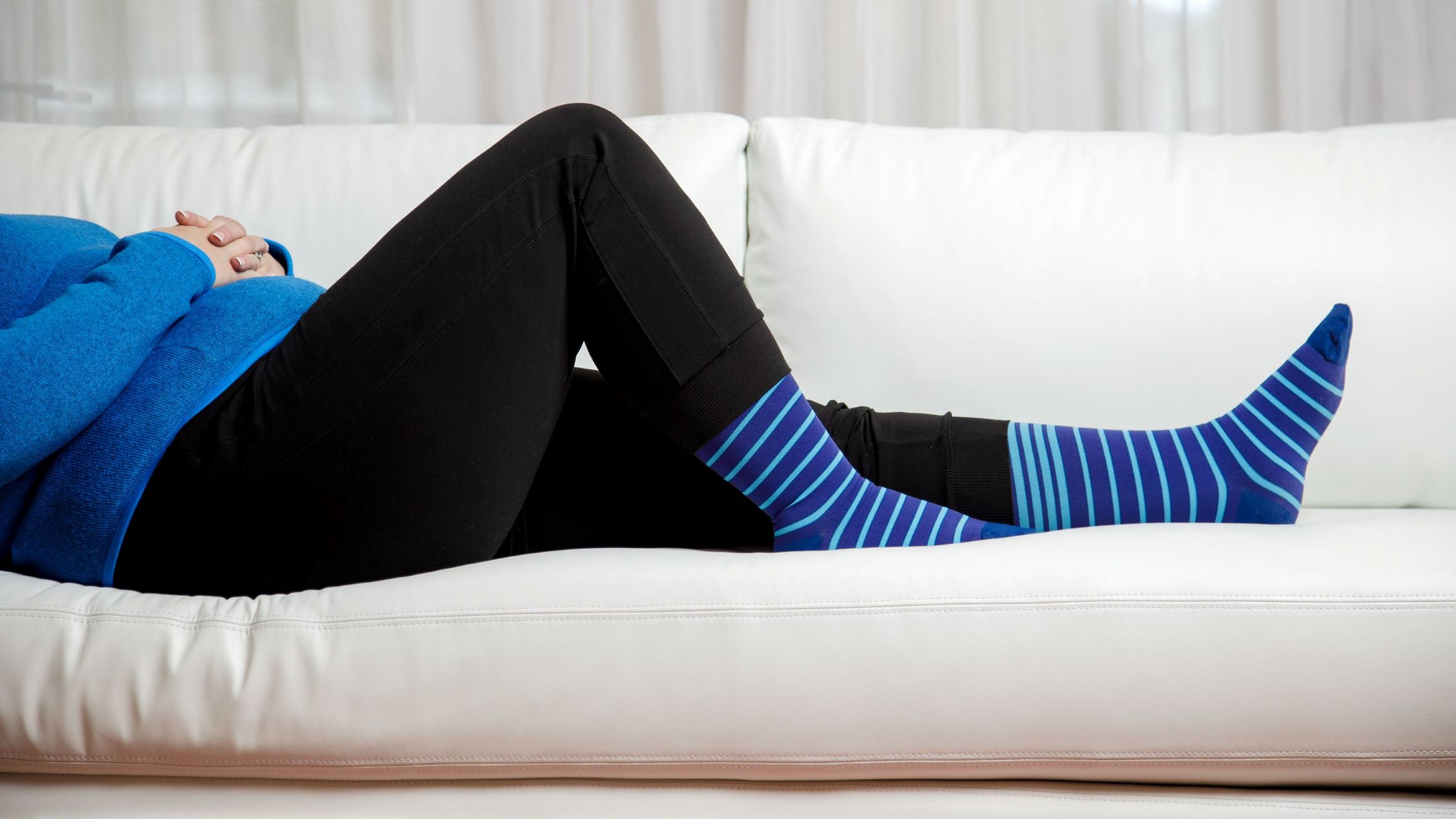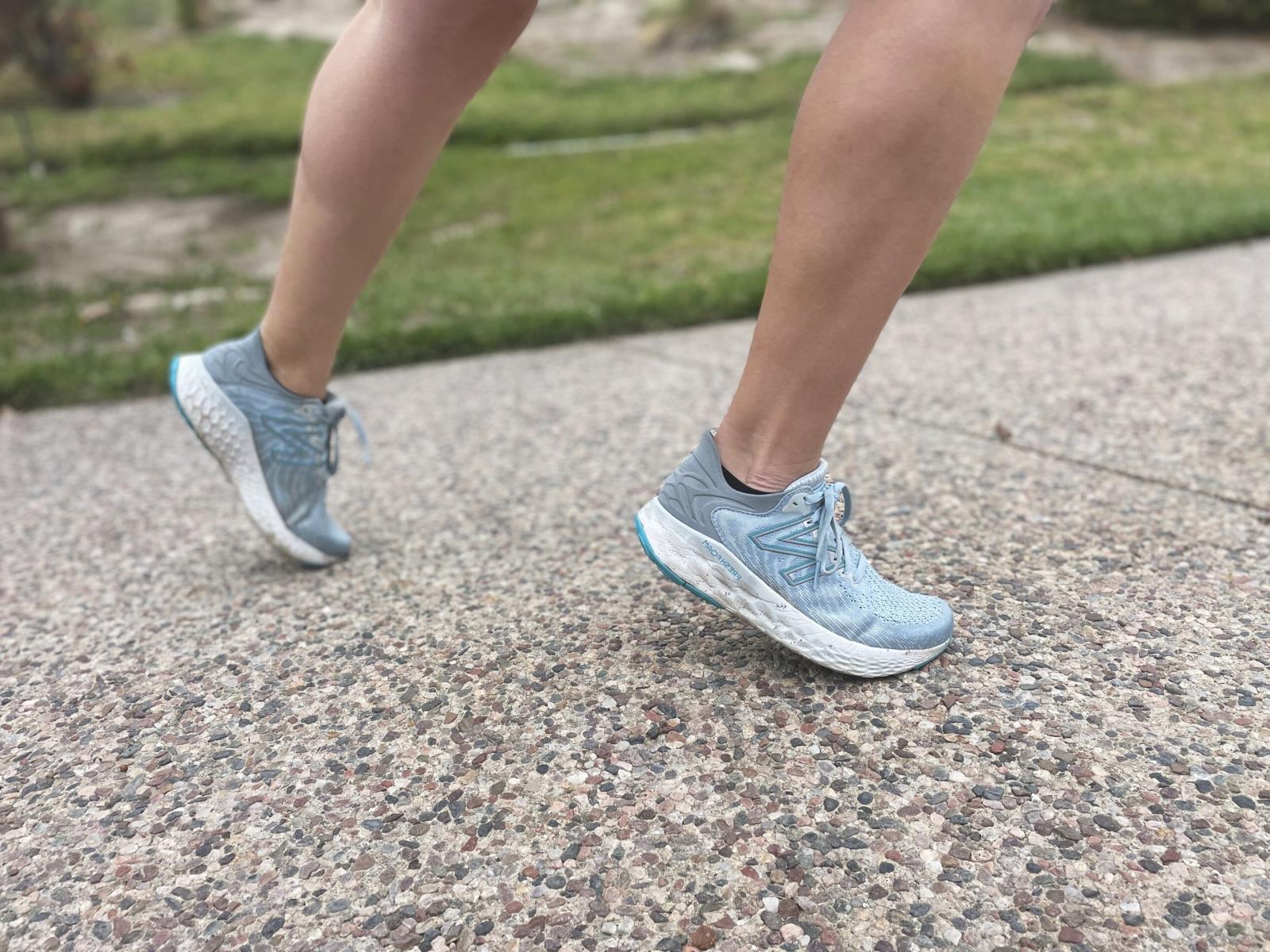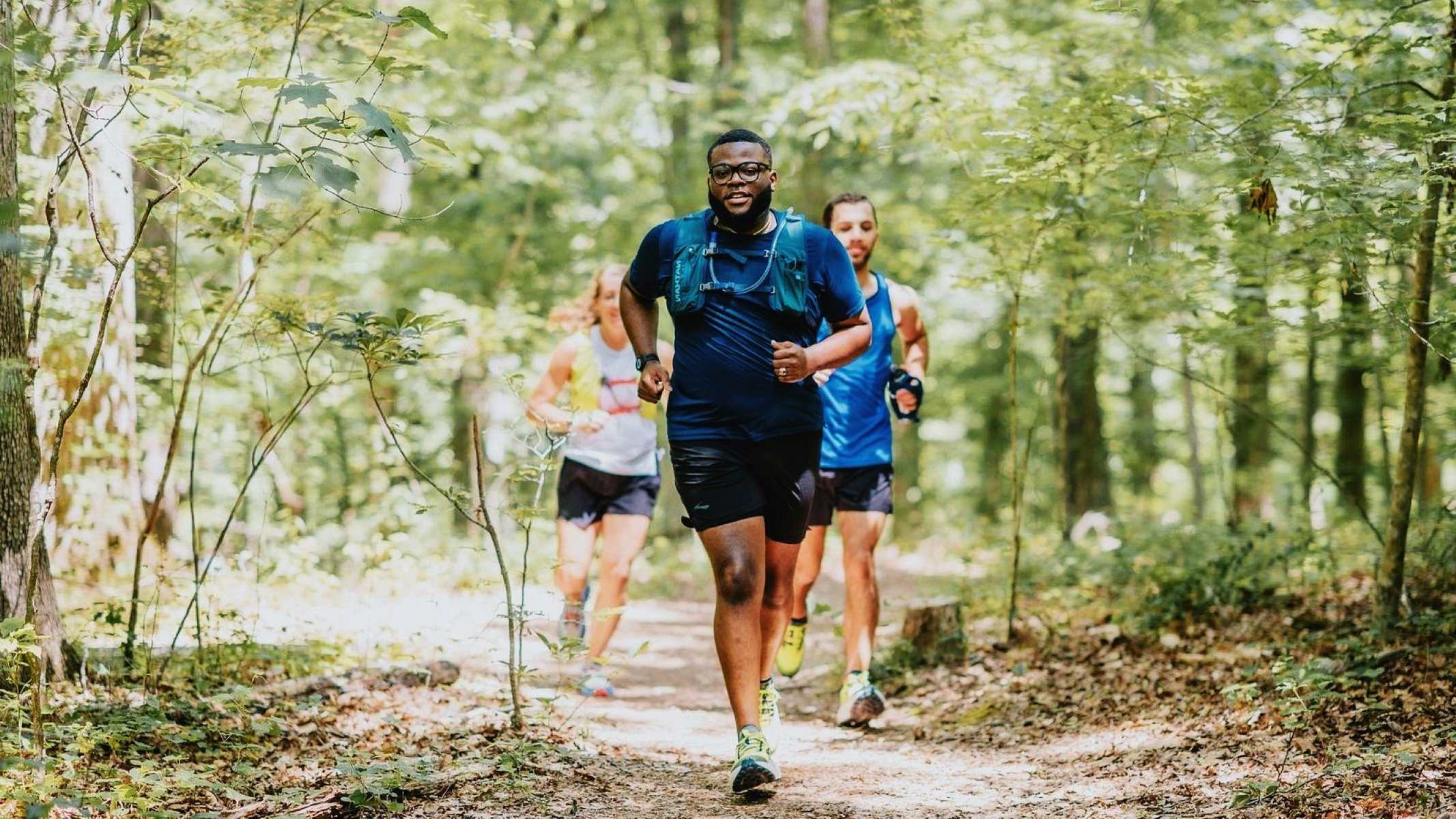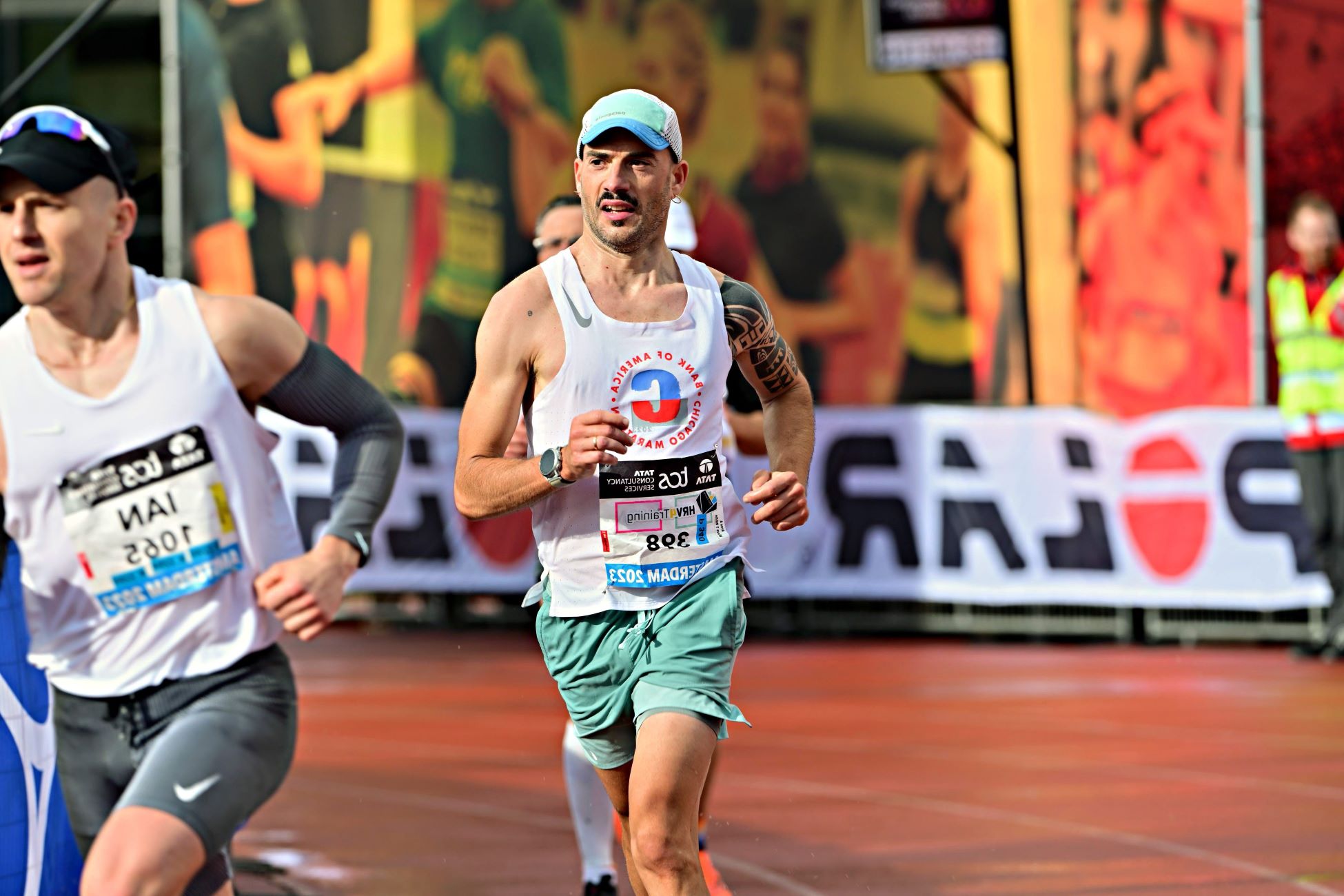Home>Health & Nutrition>Injury Prevention>8 Stretches To Increase Flexibility In Tight Muscles
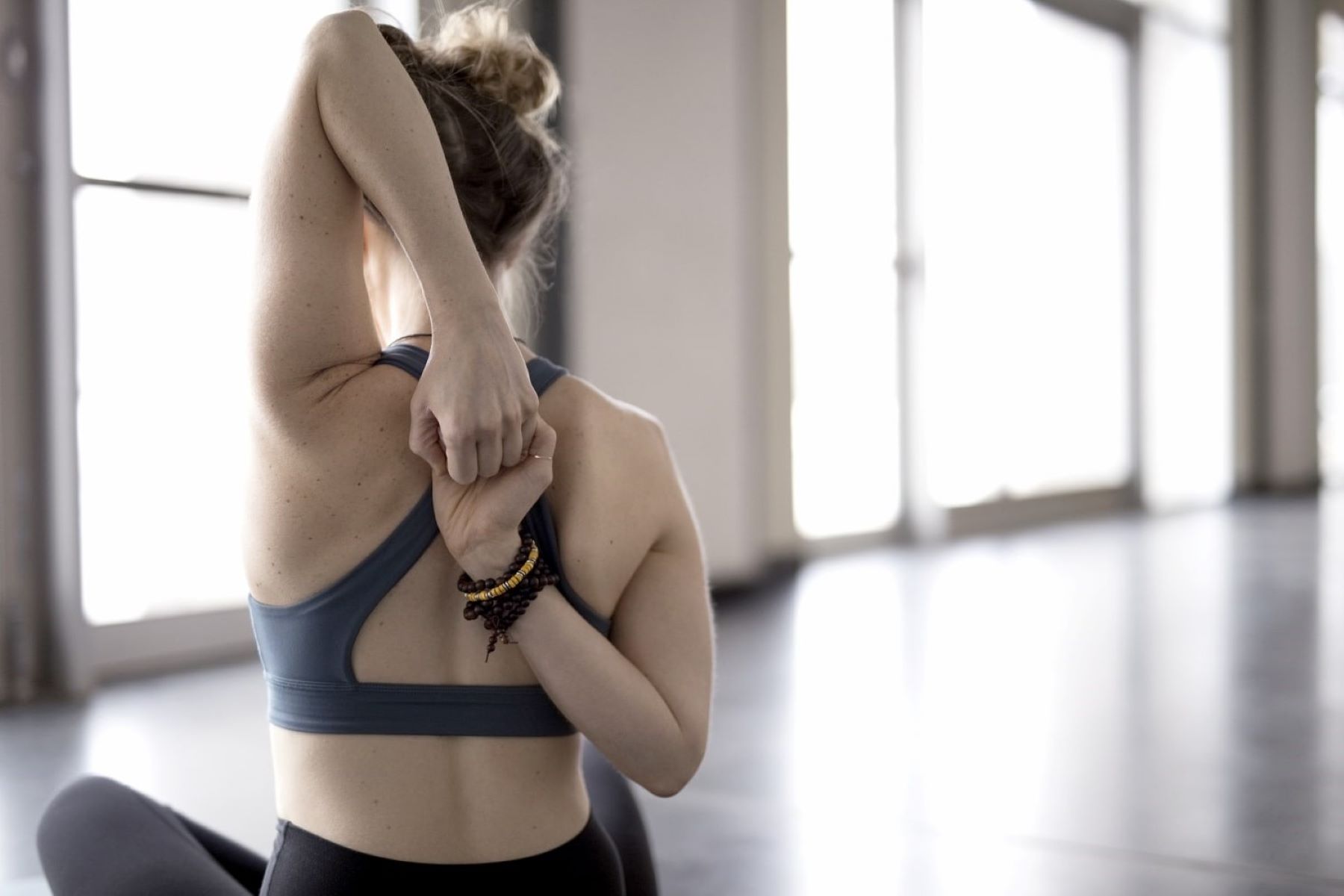

Injury Prevention
8 Stretches To Increase Flexibility In Tight Muscles
Published: February 26, 2024
Improve flexibility and prevent injuries with these 8 effective stretches for tight muscles. Incorporate these stretches into your routine for better flexibility and injury prevention.
(Many of the links in this article redirect to a specific reviewed product. Your purchase of these products through affiliate links helps to generate commission for Therunningadvisor.com, at no extra cost. Learn more)
Table of Contents
Introduction
Flexibility is a crucial component of overall physical health and well-being. It not only enhances athletic performance but also plays a pivotal role in injury prevention. By incorporating regular stretching exercises into your fitness routine, you can increase flexibility, improve range of motion, and reduce the risk of muscle strains and joint injuries.
In this article, we will explore eight effective stretches designed to target tight muscles and enhance flexibility. Whether you are an athlete looking to optimize your performance or an individual seeking to alleviate muscle tightness, these stretches can be integrated into your daily regimen to promote flexibility and prevent injuries.
By dedicating time to stretching, you can unlock the full potential of your muscles and joints, allowing for greater mobility and agility. Additionally, maintaining flexibility can contribute to better posture, reduced muscle tension, and improved circulation, all of which are essential for overall physical well-being.
Let's delve into these eight stretches that specifically target key muscle groups, providing you with the tools to enhance flexibility and minimize the risk of injuries. Whether you are a fitness enthusiast, an athlete, or someone simply looking to improve your flexibility, these stretches offer a valuable opportunity to prioritize injury prevention and optimize your physical performance.
Stretch 1: Hamstring Stretch
The hamstring stretch is a fundamental exercise that targets the muscles at the back of the thigh. Tight hamstrings can contribute to various issues, including lower back pain and decreased mobility. By incorporating this stretch into your routine, you can effectively alleviate tension in the hamstrings and enhance overall flexibility.
How to Perform the Hamstring Stretch:
-
Seated Hamstring Stretch: Sit on the floor with your legs extended in front of you. Gently lean forward, reaching towards your toes while keeping your back straight. Hold the stretch for 15-30 seconds, feeling the tension release in your hamstrings.
-
Standing Hamstring Stretch: Stand with one foot elevated on a surface, such as a step or bench. Keeping your leg straight, lean forward from your hips, feeling the stretch in the back of your thigh. Hold the position for 15-30 seconds before switching to the other leg.
Benefits of the Hamstring Stretch:
- Improved Flexibility: Regularly performing hamstring stretches can gradually increase the flexibility of the muscles, allowing for greater range of motion in the hips and lower back.
- Injury Prevention: Flexible hamstrings are less prone to strains and tears, making this stretch an essential component of injury prevention, particularly for athletes and fitness enthusiasts.
- Alleviation of Lower Back Discomfort: Tight hamstrings can contribute to lower back pain. By loosening these muscles, individuals may experience relief from discomfort associated with prolonged sitting or physical exertion.
Incorporating the hamstring stretch into your daily routine can yield significant benefits, contributing to enhanced flexibility and reduced risk of injury. Whether you are engaging in physical activities or simply aiming to maintain overall mobility, this stretch is a valuable addition to your fitness regimen.
Stretch 2: Quadriceps Stretch
The quadriceps, consisting of four powerful muscles at the front of the thigh, play a vital role in various movements, including walking, running, and jumping. However, tightness in the quadriceps can lead to decreased flexibility and increased susceptibility to injuries. The quadriceps stretch is an effective exercise designed to target and alleviate tension in these muscles, promoting enhanced flexibility and reducing the risk of strains and discomfort.
How to Perform the Quadriceps Stretch:
-
Standing Quadriceps Stretch: Stand upright and gently bend one knee, bringing your foot towards your glutes. Grasp your ankle with the corresponding hand, maintaining an upright posture. Slowly pull your foot towards your glutes, feeling the stretch in the front of your thigh. Hold the position for 15-30 seconds before switching to the other leg.
-
Lying Quadriceps Stretch: Lie on your side with your knees stacked on top of each other. Gently grasp your top ankle and pull it towards your glutes, feeling the stretch in the front of your thigh. Hold the stretch for 15-30 seconds before repeating on the other side.
Benefits of the Quadriceps Stretch:
-
Enhanced Flexibility: Regularly performing quadriceps stretches can contribute to increased flexibility in the front of the thigh, allowing for improved range of motion during physical activities and daily movements.
-
Injury Prevention: Flexible quadriceps are less prone to strains and overuse injuries, making this stretch an essential component of injury prevention, particularly for individuals engaged in activities that heavily involve the lower body.
-
Alleviation of Knee Discomfort: Tight quadriceps can contribute to knee discomfort and reduced mobility. By incorporating this stretch into your routine, individuals may experience relief from tension and discomfort in the knee area.
The quadriceps stretch serves as a valuable addition to any fitness regimen, offering a targeted approach to enhancing flexibility and minimizing the risk of injuries associated with tight quadriceps. Whether you are an athlete, fitness enthusiast, or someone seeking to improve overall mobility, integrating this stretch into your routine can yield significant benefits, contributing to improved physical well-being and injury prevention.
Stretch 3: Hip Flexor Stretch
The hip flexors, a group of muscles located at the front of the hip, play a pivotal role in various movements, including walking, running, and bending. However, prolonged periods of sitting or engaging in activities that involve repetitive hip flexion can lead to tightness in these muscles, potentially impacting flexibility and predisposing individuals to discomfort and injuries. The hip flexor stretch is a targeted exercise designed to alleviate tension in this crucial muscle group, promoting enhanced flexibility and reducing the risk of strain and discomfort.
How to Perform the Hip Flexor Stretch:
Kneeling Hip Flexor Stretch:
- Begin by assuming a kneeling position on the floor, with one knee placed in front and the other knee positioned behind you.
- Gently shift your weight forward, maintaining an upright posture, to feel the stretch in the front of the hip of the leg positioned behind you.
- Hold the stretch for 15-30 seconds, focusing on feeling the tension release in the hip flexor.
- Repeat the stretch on the other side to ensure both hip flexors are adequately targeted.
Standing Hip Flexor Stretch:
- Stand upright with one foot positioned a few feet in front of the other.
- Keeping your back straight, gently lunge forward, allowing the back knee to bend slightly.
- Feel the stretch in the front of the hip of the back leg.
- Hold the position for 15-30 seconds before switching to the other leg to ensure both hip flexors are effectively stretched.
Benefits of the Hip Flexor Stretch:
- Improved Hip Flexibility: Regularly performing hip flexor stretches can contribute to increased flexibility in the front of the hip, allowing for improved range of motion during various activities and movements.
- Injury Prevention: Flexible hip flexors are less susceptible to strains and discomfort, making this stretch an essential component of injury prevention, particularly for individuals engaged in activities that involve repetitive hip flexion.
- Alleviation of Lower Back Discomfort: Tight hip flexors can contribute to lower back discomfort and reduced mobility. By incorporating this stretch into your routine, individuals may experience relief from tension and discomfort in the lower back area.
The hip flexor stretch serves as a valuable addition to any fitness regimen, offering a targeted approach to enhancing flexibility and minimizing the risk of injuries associated with tight hip flexors. Whether you are an athlete, fitness enthusiast, or someone seeking to improve overall mobility, integrating this stretch into your routine can yield significant benefits, contributing to improved physical well-being and injury prevention.
Stretch 4: Shoulder Stretch
The shoulder stretch is a vital exercise that targets the muscles and tendons surrounding the shoulders, promoting flexibility and reducing the risk of discomfort and injuries in this crucial area. Whether you are an athlete, fitness enthusiast, or someone seeking to alleviate tension in the shoulders, incorporating this stretch into your routine can yield significant benefits, contributing to improved physical well-being and injury prevention.
How to Perform the Shoulder Stretch:
Cross-Body Shoulder Stretch:
- Begin by standing or sitting upright with a straight back.
- Gently lift one arm across your body at shoulder height.
- Use your opposite hand to support the stretching arm at the elbow, gently pulling it closer to your chest.
- Hold the stretch for 15-30 seconds, feeling the tension release in the shoulder.
- Repeat the stretch on the other arm to ensure both shoulders are adequately targeted.
Overhead Shoulder Stretch:
- Stand with your feet shoulder-width apart, maintaining an upright posture.
- Raise one arm overhead, bending the elbow and allowing your hand to reach towards the center of your upper back.
- With your opposite hand, gently grasp the elbow of the raised arm and apply slight pressure to deepen the stretch.
- Hold the position for 15-30 seconds, focusing on feeling the tension release in the shoulder.
- Repeat the stretch on the other arm to ensure both shoulders receive the benefits of this exercise.
Benefits of the Shoulder Stretch:
-
Enhanced Shoulder Flexibility: Regularly performing shoulder stretches can contribute to increased flexibility in the muscles and tendons surrounding the shoulders, allowing for improved range of motion during various activities and movements.
-
Injury Prevention: Flexible shoulders are less susceptible to strains, discomfort, and overuse injuries, making this stretch an essential component of injury prevention, particularly for individuals engaged in activities that involve repetitive shoulder movements.
-
Alleviation of Upper Body Discomfort: Tightness in the shoulders can contribute to discomfort and reduced mobility in the upper body. By incorporating this stretch into your routine, individuals may experience relief from tension and discomfort in the shoulder area, promoting overall physical well-being.
The shoulder stretch serves as a valuable addition to any fitness regimen, offering a targeted approach to enhancing flexibility and minimizing the risk of injuries associated with tight shoulders. Whether you are an athlete, fitness enthusiast, or someone seeking to improve overall mobility, integrating this stretch into your routine can yield significant benefits, contributing to improved physical well-being and injury prevention.
Stretch 5: Chest Stretch
The chest stretch is a valuable exercise that targets the muscles of the chest and shoulders, promoting flexibility and reducing the risk of discomfort and injuries in this crucial area. Whether you are an athlete, fitness enthusiast, or someone seeking to alleviate tension in the chest and shoulder region, incorporating this stretch into your routine can yield significant benefits, contributing to improved physical well-being and injury prevention.
How to Perform the Chest Stretch:
Wall Chest Stretch:
- Stand facing a corner or an open doorway.
- Place one forearm on each wall, with your elbows positioned slightly below shoulder height.
- Gently lean forward, allowing your chest to open up as you feel the stretch in the chest and shoulders.
- Hold the stretch for 15-30 seconds, focusing on feeling the tension release in the targeted muscles.
Seated Chest Stretch:
- Sit on the edge of a chair or bench with your back straight and your feet flat on the floor.
- Clasp your hands behind your back, with your palms facing inward.
- Gently lift your hands upward, feeling the stretch in your chest and shoulders.
- Hold the position for 15-30 seconds, allowing the muscles to gradually relax and elongate.
Benefits of the Chest Stretch:
-
Improved Chest Flexibility: Regularly performing chest stretches can contribute to increased flexibility in the chest and shoulder muscles, allowing for improved range of motion during various activities and movements.
-
Injury Prevention: Flexible chest muscles are less susceptible to strains and discomfort, making this stretch an essential component of injury prevention, particularly for individuals engaged in activities that involve repetitive upper body movements.
-
Posture Enhancement: By alleviating tightness in the chest, individuals may experience improved posture, as the stretch helps counteract the effects of prolonged sitting and slouching, promoting overall spinal alignment and physical well-being.
The chest stretch serves as a valuable addition to any fitness regimen, offering a targeted approach to enhancing flexibility and minimizing the risk of injuries associated with tight chest and shoulder muscles. Whether you are an athlete, fitness enthusiast, or someone seeking to improve overall mobility, integrating this stretch into your routine can yield significant benefits, contributing to improved physical well-being and injury prevention.
Stretch 6: Calf Stretch
The calf stretch is a fundamental exercise that targets the muscles of the lower leg, specifically the gastrocnemius and soleus muscles. Tightness in the calves can result from various factors, including prolonged periods of standing, wearing high heels, or engaging in activities that involve repetitive calf contractions, such as running or jumping. Incorporating the calf stretch into your regular routine can effectively alleviate tension in these muscles, promoting enhanced flexibility and reducing the risk of discomfort and injuries in the lower leg region.
How to Perform the Calf Stretch:
Standing Calf Stretch:
- Begin by standing upright near a wall or sturdy object for support.
- Place one foot a few feet behind the other, keeping both feet flat on the ground.
- Gently lean forward, bending the front knee while keeping the back leg straight.
- Feel the stretch in the calf of the back leg, focusing on the elongation of the muscle.
- Hold the position for 15-30 seconds before switching to the other leg to ensure both calves receive the benefits of the stretch.
Seated Calf Stretch:
- Sit on the floor with your legs extended in front of you.
- Loop a towel or resistance band around the ball of one foot, holding the ends of the towel with both hands.
- Gently pull the towel towards you, flexing your foot to feel the stretch in the calf muscle.
- Hold the stretch for 15-30 seconds, allowing the muscles to gradually relax and elongate.
- Repeat the stretch with the other leg to ensure both calves are adequately targeted.
Benefits of the Calf Stretch:
-
Enhanced Lower Leg Flexibility: Regularly performing calf stretches can contribute to increased flexibility in the muscles of the lower leg, allowing for improved range of motion during activities such as walking, running, and jumping.
-
Injury Prevention: Flexible calf muscles are less susceptible to strains, discomfort, and overuse injuries, making this stretch an essential component of injury prevention, particularly for individuals engaged in activities that heavily involve the lower legs.
-
Alleviation of Foot and Ankle Discomfort: Tight calves can contribute to discomfort and reduced mobility in the feet and ankles. By incorporating this stretch into your routine, individuals may experience relief from tension and discomfort in the lower leg region, promoting overall physical well-being.
The calf stretch serves as a valuable addition to any fitness regimen, offering a targeted approach to enhancing flexibility and minimizing the risk of injuries associated with tight calf muscles. Whether you are an athlete, fitness enthusiast, or someone seeking to improve overall mobility, integrating this stretch into your routine can yield significant benefits, contributing to improved physical well-being and injury prevention.
Stretch 7: Lower Back Stretch
The lower back stretch is a crucial exercise that targets the muscles of the lower back, promoting flexibility and reducing the risk of discomfort and injuries in this vital area. Whether you are an athlete, fitness enthusiast, or someone seeking to alleviate tension in the lower back, incorporating this stretch into your routine can yield significant benefits, contributing to improved physical well-being and injury prevention.
How to Perform the Lower Back Stretch:
Knee-to-Chest Stretch:
- Begin by lying on your back on a comfortable surface, such as a yoga mat or carpet.
- Gently bend your knees, keeping your feet flat on the floor.
- Bring one knee towards your chest, using your hands to clasp the shin or back of the thigh.
- Hold the stretch for 15-30 seconds, feeling the tension release in the lower back and hip of the stretched leg.
- Repeat the stretch with the other leg to ensure both sides of the lower back are effectively targeted.
Seated Forward Fold:
- Sit on the floor with your legs extended in front of you.
- Slowly lean forward, reaching towards your toes while keeping your back as straight as possible.
- Hold the stretch for 15-30 seconds, focusing on feeling the elongation and release of tension in the lower back and hamstrings.
Benefits of the Lower Back Stretch:
-
Improved Lower Back Flexibility: Regularly performing lower back stretches can contribute to increased flexibility in the muscles of the lower back, allowing for improved range of motion during various activities and movements.
-
Injury Prevention: Flexible lower back muscles are less susceptible to strains and discomfort, making this stretch an essential component of injury prevention, particularly for individuals engaged in activities that involve bending, lifting, or prolonged sitting.
-
Alleviation of Discomfort: Tightness in the lower back can contribute to discomfort and reduced mobility. By incorporating this stretch into your routine, individuals may experience relief from tension and discomfort in the lower back region, promoting overall physical well-being.
The lower back stretch serves as a valuable addition to any fitness regimen, offering a targeted approach to enhancing flexibility and minimizing the risk of injuries associated with tight lower back muscles. Whether you are an athlete, fitness enthusiast, or someone seeking to improve overall mobility, integrating this stretch into your routine can yield significant benefits, contributing to improved physical well-being and injury prevention.
Stretch 8: Tricep Stretch
The tricep stretch is a fundamental exercise that targets the triceps, the muscles located at the back of the upper arm. Tightness in the triceps can result from various activities, including weightlifting, repetitive arm movements, or prolonged periods of desk work. Incorporating the tricep stretch into your regular routine can effectively alleviate tension in these muscles, promoting enhanced flexibility and reducing the risk of discomfort and injuries in the upper arm region.
How to Perform the Tricep Stretch:
Overhead Tricep Stretch:
- Stand or sit upright with a straight back.
- Raise one arm overhead, bending the elbow and allowing your hand to reach towards the center of your upper back.
- With your opposite hand, gently grasp the elbow of the raised arm and apply slight pressure to deepen the stretch.
- Hold the position for 15-30 seconds, focusing on feeling the tension release in the tricep.
- Repeat the stretch on the other arm to ensure both triceps receive the benefits of this exercise.
Cross-Body Tricep Stretch:
- Begin by standing or sitting upright with a straight back.
- Gently lift one arm across your body at shoulder height.
- Use your opposite hand to support the stretching arm at the elbow, gently pulling it closer to your chest.
- Hold the stretch for 15-30 seconds, feeling the tension release in the tricep.
- Repeat the stretch on the other arm to ensure both triceps are adequately targeted.
Benefits of the Tricep Stretch:
- Enhanced Arm Flexibility: Regularly performing tricep stretches can contribute to increased flexibility in the muscles of the upper arm, allowing for improved range of motion during various activities and movements.
- Injury Prevention: Flexible triceps are less susceptible to strains and discomfort, making this stretch an essential component of injury prevention, particularly for individuals engaged in activities that heavily involve the arms.
- Alleviation of Arm Discomfort: Tight triceps can contribute to discomfort and reduced mobility in the upper arm. By incorporating this stretch into your routine, individuals may experience relief from tension and discomfort in the tricep area, promoting overall physical well-being.
The tricep stretch serves as a valuable addition to any fitness regimen, offering a targeted approach to enhancing flexibility and minimizing the risk of injuries associated with tight tricep muscles. Whether you are an athlete, fitness enthusiast, or someone seeking to improve overall mobility, integrating this stretch into your routine can yield significant benefits, contributing to improved physical well-being and injury prevention.
Read more: 3 Exercises To Improve Hamstring Flexibility
Conclusion
Incorporating stretching exercises into your daily routine is a proactive approach to enhancing flexibility and minimizing the risk of injuries. The eight stretches discussed in this article target key muscle groups, offering a comprehensive strategy for promoting overall physical well-being and injury prevention.
By dedicating time to perform these stretches regularly, individuals can experience a myriad of benefits. Enhanced flexibility allows for improved range of motion during various activities, contributing to better posture, reduced muscle tension, and improved circulation. Moreover, flexible muscles are less prone to strains and tears, making these stretches essential for athletes, fitness enthusiasts, and individuals seeking to maintain optimal physical health.
The hamstring stretch, quadriceps stretch, hip flexor stretch, shoulder stretch, chest stretch, calf stretch, lower back stretch, and tricep stretch each play a vital role in targeting specific muscle groups, addressing common areas of tightness, and promoting overall flexibility. Whether you are engaged in physical activities, leading a sedentary lifestyle, or experiencing discomfort in specific muscle groups, these stretches offer a valuable opportunity to prioritize injury prevention and optimize physical performance.
It is important to approach stretching with mindfulness and consistency. Each stretch should be performed in a controlled manner, focusing on feeling the tension release in the targeted muscles. By integrating these stretches into your daily regimen, you can unlock the full potential of your muscles and joints, allowing for greater mobility, agility, and overall physical well-being.
In conclusion, the incorporation of these eight stretches into your fitness routine offers a proactive and effective approach to injury prevention and enhanced flexibility. Whether you are a seasoned athlete, a fitness enthusiast, or someone simply looking to improve your flexibility, these stretches provide a valuable foundation for maintaining optimal physical health. Embracing the practice of regular stretching empowers individuals to take proactive steps towards injury prevention, ultimately contributing to a more balanced and fulfilling lifestyle.

